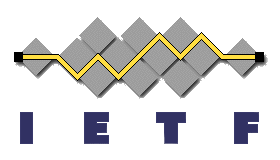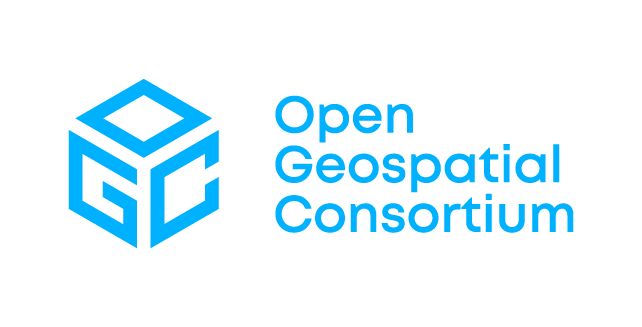Available Standards (3315)
Showing standards 2401 - 2600
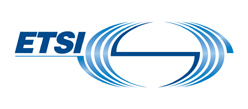
Network Functions Virtualisation (NFV) Release 2; Management and Orchestration; Performance Measurements Specification
The present document specifies the performance m

Network Functions Virtualisation (NFV) Release 2; Management and Orchestration; Ve-Vnfm reference point - Interface and Information Model Specification
The present document specifies the interfaces supported over the Ve-Vnfm-em and Ve-Vnfm-vnf reference points of the NFV-MANO architectural framework ETSI GS NFV-MAN 001 as well as the information e

Network Functions Virtualisation (NFV) Release 2; Management and Orchestration; Vi-Vnfm reference point - Interface and Information Model Specification
The present document specifies the interfaces supported over the Vi-Vnfm reference point of the NFV-MANO architectural framework as well as the information elements exchanged over those interfaces.

Network Functions Virtualisation (NFV) Release 2; Management and Orchestration; Vi-Vnfm reference point - Interface and Information Model Specification
The present document specifies the interfaces supported over the Vi-Vnfm reference point of the NFV-MANO architectural framework as well as the information elements exchanged over those interfaces.

Network Functions Virtualisation (NFV) Release 2; Management and Orchestration; VNF Descriptor and Packaging Specification
The present document develops specifications for packaging of VNFs to be delivered to service providers, focusing on the holistic end-to-end view of the VNF Package lifecycle, from design to runtim

Network Functions Virtualisation (NFV) Release 2; Protocols and Data Models; Network Service Descriptor File Structure Specification
The present document specifies the structure of the Network Service Descriptor (NSD) file archive and the naming conventions for the different files it contains, fulfilling the requirements specifi

Network Functions Virtualisation (NFV) Release 2; Protocols and Data Models; Network Service Descriptor File Structure Specification
The present document specifies the structure of the Network

Network Functions Virtualisation (NFV) Release 2; Protocols and Data Models; NFV descriptors based on TOSCA specification
The present document specifies a data model for NFV descriptors, using the TOSCA Simple Profile in YAML, fulfilling the requirements specified in ETSI GS NFV-IFA 011 and ETSI GS NFV-IFA 014 for a V

Network Functions Virtualisation (NFV) Release 2; Protocols and Data Models; NFV descriptors based on TOSCA specification
The present document specifies a data model for NFV descriptors, using the TOSCA Simple Profile in YAML, fulfilling the requirements specified in ETSI GS NFV-IFA 011 and ETSI GS NFV-IFA 014 for a V

Network Functions Virtualisation (NFV) Release 2; Protocols and Data Models; NFV Descriptors based on YANG Specification
The present document specifies the YANG models for representing Network Functions Virtualisation (NFV) descriptors, fulfilling the requirements specified in ETSI GS NFV-IFA 011 and ETSI GS NFV-IFA

Network Functions Virtualisation (NFV) Release 2; Protocols and Data Models; RESTful protocols specification for the Or-Vnfm Reference Point
The present document defines the protocol and data model for the following interfaces used over the Or-Vnfm reference point, in the form of RESTful Application Programming Interface (APIs) specific

Network Functions Virtualisation (NFV) Release 2; Protocols and Data Models; RESTful protocols specification for the Os-Ma-nfvo Reference Point
The present document defines the protocol and data model for the following interfaces, in the form of RESTful Application Programming Interface (APIs) specifications:

Network Functions Virtualisation (NFV) Release 2; Protocols and Data Models; RESTful protocols specification for the Ve-Vnfm Reference Point
The present document defines the protocol and data model for the following interfaces used over the Ve-Vnfm reference point, in the form of RESTful Application Programming Interfaces (APIs) specifi

Network Functions Virtualisation (NFV) Release 2; Protocols and Data Models; RESTful protocols specification for the Ve-Vnfm Reference Point
The present document defines the protocol and data model for the following interfaces used over the Ve-Vnfm reference point, in the form of RESTful Application Programming Interfaces (APIs) specifi

Network Functions Virtualisation (NFV) Release 2; Protocols and Data Models; Specification of common aspects for RESTful NFV MANO APIs
The present document specifies common aspects of RESTful protocols and data models for ETSI NFV management and orchestration (MANO) interfaces.

Network Functions Virtualisation (NFV) Release 2; Protocols and Data Models; VNF Package and PNFD Archive specification
The present document specifies the structure and format of a VNF package file and its constituents, fulfilling the requirements specified in ETSI GS NFV-IFA 011 for a VNF package.

Network Functions Virtualisation (NFV) Release 2; Protocols and Data Models; VNF Package and PNFD Archive specification
The present document specifies the structure and format of a VNF package file and its constituents, fulfilling the requirements specified in ETSI GS NFV-IFA 011 for a VNF package.

Network Functions Virtualisation (NFV) Release 2; Protocols and Data Models; VNF Package specification
The present document specifies the structure and format of a VNF package file and its constituents, fulfilling the requirements specified in ETSI GS NFV-IFA 011 [1] for a VNF package.

Network Functions Virtualisation (NFV) Release 2; Security; Access Token Specification for API Access
The present document defines the access tokens and related metadata for RESTful protocols and data model for ETSI NFV management and orchestration (MANO) interfaces.

Network Functions Virtualisation (NFV) Release 2; Security; VNF Package Security Specification
The present document outlines the requirements for integrity and authenticity protection by signing VNF Package artifacts and verifying these artifacts during instantiation.

Network Functions Virtualisation (NFV) Release 2; Security; VNF Package Security Specification
The present document outlines the requirements for integrity and authenticity protection by signing VNF Package artifacts and verifying these artifacts during instantiation.

Network Functions Virtualisation (NFV) Release 2; Testing; NFVI Compute and Network Metrics Specification
Although many metrics for the performance and utilization of the Network Function Virtualisation Infrastructure (NFVI) components have been in wide use for many years, there were no independent spe

Network Functions Virtualisation (NFV) Release 3; Management and Orchestration; Architecture enhancement for Security Management Specification
The present document defines the requirements to interface the Security Control to NFV-MANO as described in ETSI GS NFV-SEC 013 and the LI Controller in ETSI GR NFV-SEC 011.

Network Functions Virtualisation (NFV) Release 3; Management and Orchestration; Functional requirements specification
Network Functions Virtualisation (NFV) adds new capabilities to communications networks and requires a new set of management and orchestration functions to be added to the current model of operatio

Network Functions Virtualisation (NFV) Release 3; Management and Orchestration; Interface and Information Model Specification for Multi-Site Connectivity Services
The present document specifies the interfaces for managemen

Network Functions Virtualisation (NFV) Release 3; Management and Orchestration; Multiple Administrative Domain Aspect Interfaces Specification
The present document specifies the functional requirements, interfaces and operations to support the provision of network services across multiple administrative domains based on the interactions b

Network Functions Virtualisation (NFV) Release 3; Management and Orchestration; Network Service Templates Specification
The present document specifies requirements and templates fo

Network Functions Virtualisation (NFV) Release 3; Management and Orchestration; Or-Vi reference point - Interface and Information Model Specification
The present document specifies the interfaces supported over the Or-Vi reference point of the NFV-MANO architectural framework ETSI GS NFV 002 as well as the information elements exchanged over tho

Network Functions Virtualisation (NFV) Release 3; Management and Orchestration; Or-Vnfm reference point - Interface and Information Model Specification
The present document specifies the interfaces supported over the Or-Vnfm reference point of the Network Functions Virtualisation Management and Orchestration (NFV-MANO) architectural framework ETSI

Network Functions Virtualisation (NFV) Release 3; Management and Orchestration; Os-Ma-Nfvo reference point - Interface and Information Model Specification
The present document defines the interfaces supported over the Os-Ma-nfvo reference point of the NFV-MANO architectural framework as well as the information elements exchanged over those interfaces

Network Functions Virtualisation (NFV) Release 3; Management and Orchestration; Requirements and interfaces specification for management of NFV-MANO
The present document specifies the interface requirements, the interfaces and the necessary information elements enabling the fault, configuration and information, performance, state and log manage

Network Functions Virtualisation (NFV) Release 3; Management and Orchestration; Ve-Vnfm reference point - Interface and Information Model Specification
The present document specifies the interfaces supported ove

Network Functions Virtualisation (NFV) Release 3; Management and Orchestration; Vi-Vnfm reference point - Interface and Information Model Specification
The present document specifies the interfaces supported over the Vi-Vnfm reference point of the NFV-MANO architectural framework as well as the information elements exchanged over those interfaces.

Network Functions Virtualisation (NFV) Release 3; Management and Orchestration; VNF Descriptor and Packaging Specification
The present document develops specifications for packaging of VNFs to be delivered to service providers, focusing on the holistic end-to-end view of the VNF Package lifecycle, from design to runtim

Network Functions Virtualisation (NFV) Release 3; NFV Evolution and Ecosystem; Hardware Interoperability Requirements Specification
The present document develops a set of normative interoperability requirements for the Network Function Virtualisation (NFV) hardware ecosystem and telecommunications physical environment to suppor

Network Functions Virtualisation (NFV) Release 3; NFV Security; Security Specification for MANO Components and Reference points
The present document provides the results of a simplified threat analysis for NFV-MANO functional blocks (NFVO, VNFM, VIM) and reference points Or-Vnfm, Vi-Vnfm, Or-Vi based on the guidance given i

Network Functions Virtualisation (NFV) Release 3; Protocols and Data Models: RESTful protocols specification for the management of NFV-MANO
The present document specifies a set of RESTful protocols and data models fulfilling the requirements specified in ETSI GS NFV-IFA 031 for the interfaces that enable the management of NFV-MANO func

Network Functions Virtualisation (NFV) Release 3; Reliability; Maintaining Service Availability and Continuity Upon Software Modification
The present document specifies requirements for the purpose

Network Functions Virtualisation (NFV) Release 3; Security ; Security Management and Monitoring specification
In NFV network, network services and network functions can be deployed dynamically.

Network Functions Virtualisation (NFV) Release 3; Security; System architecture specification for execution of sensitive NFV components
Trust, as defined in ETSI GR NFV-SEC 003, is an important component of security. One weakness of software as opposed to hardware, is that software can be copied in whole or in part.

Network Functions Virtualisation (NFV) Release 3; Testing; NFVI Compute and Network Metrics Specification
Although many metrics for the performance and utilization of the Network Function Virtualisation Infrastructure (NFVI) components have been in wide use for many years, there were no independent spe

Network Functions Virtualisation (NFV) Release 3; Testing; Specification of Networking Benchmarks and Measurement Methods for NFVI
The widespread adoption of virtualised implementation of functions has brought about many changes and challenges for the testing and benchmarking industries.

Network Functions Virtualisation (NFV) Release 3; Virtualised Network Function; Specification of the Classification of Cloud Native VNF implementations
The present document focusses on the characterization of Virtualised Network Functions (VNF) as part of their configuration and deployment in "the Cloud".

Network Functions Virtualisation (NFV) Release 4; Architectural Framework; Report on VNF generic OAM functions
This work item will analyse and define the type of OAM functions for VNFs that can be generalized and

Network Functions Virtualisation (NFV); Acceleration Technologies; Acceleration Resource Management Interface Specification; Release 3
The present document specifies the interfaces used for accel

Network Functions Virtualisation (NFV); Acceleration Technologies; Network Acceleration Interface Specification; Release 3
The present document specifies the network acceleration related interfaces supported over the Vn-Nf reference point of the NFV architectural framework between a VNF and a dedicated switch controlle

Network Functions Virtualisation (NFV); Acceleration Technologies; Report on Acceleration Technologies & Use Cases
The present document provides an overview of NFV acceleration techniques and suggests a common architecture and abstraction layer, which allows deployment of various accelerators within the NFVI an

Network Functions Virtualisation (NFV); Accountability; Report on Quality Accountability Framework
The present document describes a quality accountability framework for NFV.

Network Functions Virtualisation (NFV); Architectural Framework
The present document describes the high-level functional architectural framework and design philosophy of virtualised network functions and of the supporting infrastructure.

Network Functions Virtualisation (NFV); Assurance; Report on Active Monitoring and Failure Detection
The present document develops a report detailing methods for active monitoring of VNFs, NFVI and E2E network services and detection of failures.

Network Functions Virtualisation (NFV); Ecosystem; Report on SDN Usage in NFV Architectural Framework
The present document identifies the most common design patterns for using SDN in an NFV architectural framework.

Network Functions Virtualisation (NFV); Evolution and Ecosystem; Report on Multi-tenancy in NFV
This work item will study multi-tenancy related use cases for NFV to remove the gap between the existing IF

Network Functions Virtualisation (NFV); Infrastructure Overview
The present document presents an overview of the architecture of the NFV Infrastructure (NFVI) which supports deployment and execution of Virtualised Network Functions (VNFs).

Network Functions Virtualisation (NFV); Infrastructure; Compute Domain
The present document presents an architectural description of the compute (& storage) domain of the infrastructure which supports virtualised network functions (VNFs).

Network Functions Virtualisation (NFV); Infrastructure; Hypervisor Domain
The present document presents the architecture of the Hypervisor Domain of the NFV Infrastructure which supports deployment and execution of virtual appliances.

Network Functions Virtualisation (NFV); Infrastructure; Methodology to describe Interfaces and Abstractions
The present document describes how Network Functions Virtualisation (NFV) related interfaces and abstractions are to be derived and specified.

Network Functions Virtualisation (NFV); Infrastructure; Network Domain
The present document presents an architectural description of the Infrastructure Network domain of the infrastructure which supports virtualised network functions.

Network Functions Virtualisation (NFV); Management and Orchestration
The present document describes the management and orchestration framework required for the provisioning of virtualised network functions (VNF), and the related operations, such as the configuration

Network Functions Virtualisation (NFV); Management and Orchestration; Report on Architectural Options
The present document is an informative architectural study that identifies different viable architectural and functional options for the partitioning/distribution/consolidation of functionality amo

Network Functions Virtualisation (NFV); NFV Performance & Portability Best Practises
The present document provides a list of features which the performance and portability templates (Virtual Machine Descriptor and Compute Host Descriptor) should contain for the appropriate deployme

Network Functions Virtualisation (NFV); NFV Security; Cataloguing security features in management software
The present document gives a survey of the security

Network Functions Virtualisation (NFV); NFV Security; Privacy and Regulation; Report on Lawful Interception Implications
The present document provides a problem statement on implementing LI in NFV and identifies the necessary capabilities to be provided in NFV to meet the requirements outlined for telecommunications

Network Functions Virtualisation (NFV); NFV Security; Problem Statement
The present document aims to:

Network Functions Virtualisation (NFV); NFV Security; Report on Retained Data problem statement and requirements
The present document is designed to support Retained Data functionality.

Network Functions Virtualisation (NFV); NFV Security; Report on use cases and technical approaches for multi-layer host administration
The present document addresses multi-layer administration use cases and technical approaches, an issue identified in the Security Problem Statement, ETSI GS NFV-SEC 001.

Network Functions Virtualisation (NFV); NFV Security; Security and Trust Guidance
The present document has been developed to describe the security and trust guidance that is unique to NFV development, architecture and operation.

Network Functions Virtualisation (NFV); Pre-deployment Testing; Report on Validation of NFV Environments and Services
The present document is an informative report on methods for pre-deployment testing of the functional components of an NFV environment.

Network Functions Virtualisation (NFV); Proofs of Concept; Framework
The present document defines a framework for use within ETSI NFV ISG to coordinate and promote public demonstrations of Proofs of Concept (PoC) illustrating key aspects of NFV.

Network Functions Virtualisation (NFV); Proofs of Concept; Framework
The present document defines a framework for use within ETSI NFV ISG to coordinate and promote public demonstrations of Proofs of Concept (PoC) illustrating key aspects of NFV.

Network Functions Virtualisation (NFV); Reliability; Report on Models and Features for End-to-End Reliability
The present document describes the models and methods for end-to-end reliability in NFV environments and software upgrade from a resilience perspective.

Network Functions Virtualisation (NFV); Reliability; Report on Scalable Architectures for Reliability Management
The present document describes a study of how today's Cloud/Data Centre techniques can be adapted to achieve scalability, efficiency, and reliability in NFV environments.

Network Functions Virtualisation (NFV); Resiliency Requirements
The present document focuses on unique aspects related to network and service resiliency in a virtualised network environment.

Network Functions Virtualisation (NFV); Security Guide; Report on Security Aspects and Regulatory Concerns
The present document is a guide to developers of NFV related documents and applications in means to address the security aspects and regulatory concerns as they impact the security of deployed netw

Network Functions Virtualisation (NFV); Service Quality Metrics
The present document enumerates metrics for NFV infrastructure, management and orchestration service qualities that can impact the end user service qualities delivered by VNF instances hosted on NF

Network Functions Virtualisation (NFV); Terminology for Main Concepts in NFV
The present document provides terms and definitions for conceptual entities within the scope of the ISG NFV, in order to achieve a "common language" across all the ISG NFV working groups.

Network Functions Virtualisation (NFV); Testing Methodology; Report on NFV Interoperability Testing Methodology
The present document provides methodology guidelines for interoperability testing of NFV features, starting from a review of some basic concepts for interoperability testing and their fit in an NFV

Network Functions Virtualisation (NFV); Use Cases
The scope of the present document is to describe use cases of interest for Network Functions Virtualisation (NFV). It updates and extends ETSI GS NFV 001 V1.1.1
.

Network Functions Virtualisation (NFV); Virtual Network Functions Architecture
The present document objective is to identify the most common and relevant software architectural patterns present when virtualising network functions and therefore to identify and specify function

Network Functions Virtualisation (NFV); Virtualisation Requirements
The present document specifies the requirements that Telecommunications operations put on Network Functions Virtualisation in order to consolidate network equipment, belonging to fixed and mobile n

Network Functions Virtualisation (NFV); Virtualisation Technologies; Hypervisor Domain Requirements specification; Release 3
The present document provides requirements for the hyperviso

Network Functions Virtualisation (NFV); Virtualisation Technologies; Report on the application of Different Virtualisation Technologies in the NFV Framework
The present document reviews virtualisation technologies and

Network Technologies (NTECH); Autonomic network engineering for the self-managing Future Internet (AFI); Autonomicity and Self-Management in the Backhaul and Core network parts of the 3GPP Architecture
The document aims at providing recommendations for the introduction of autonomics (management and control intelligence) in the 3GPP Core and Backhaul network architectures.

Network Technologies (NTECH); Autonomic network engineering for the self-managing Future Internet (AFI); Instantiation of the ETSI Generic Autonomic Network Architecture (GANA) Model onto heterogeneous wireless access technologies using cognitive algorith
The scope of the work is to provide a mapping of architectural components for autonomic network management & control developed/implemented in the EC-funded WISHFUL Project to the ETSI NTECH AFI

Network Technologies (NTECH); Autonomic network engineering for the self-managing Future Internet (AFI); Scenarios, Use Cases and Requirements for Autonomic/Self-Managing Future Internet
The document contains a description of scenarios, use cases, and definition of requirements for the autonomic/self-managing future internet.

Next Generation Protocols (NGP)
The scope of the Standard is to specify the minimum set of key requirements for the Next Generation Protocols (NGP), Industry Specific Group (ISG).
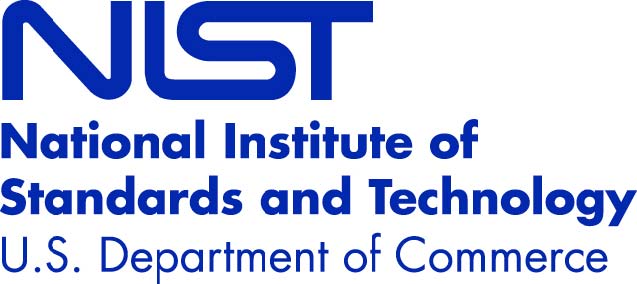
NIST Big Data Interoperability Framework: Volume 1, Definitions
Big Data is a term used to describe the large amount of data in the networked, digitized, sensor-laden, information-driven world.

NIST Big Data Interoperability Framework: Volume 2, Big Data Taxonomies [Version 2]
Big Data is a term used to describe the large amount of data in the networked, digitized, sensor- laden, information-driven world.

NIST Big Data Interoperability Framework: Volume 3, Use Cases and General Requirements
Big Data is a term used to describe the large amount of data in the networked, digitized, sensor-laden, information-driven world.

NIST Big Data Interoperability Framework: Volume 4, Security and Privacy Version 3
Big Data is a term used to describe the large amount of data in the networked, digitized, sensor-laden, information-driven world.

NIST Big Data Interoperability Framework: Volume 5, Architectures White Paper Survey
Big Data is a term used to describe the large amount of data in the networked, digitized, sensor-laden, information-driven world.

NIST Big Data Interoperability Framework: Volume 6, Big Data Reference Architecture
Big Data is a term used to describe the large amount of data in the networked, digitized, sensor-laden, information-driven world.

NIST Big Data Interoperability Framework: Volume 7, Big Data Standards Roadmap [Version 2]
Big Data is a term used to describe the large amount of data in the networked, digitized, sensor- laden, information-driven world.

NIST Big Data Interoperability Framework: Volume 8, Reference Architecture Interfaces
This document summarizes interfaces that are instrumental for the interaction with Clouds, Containers, and High Performance Computing (HPC) systems to manage virtual clusters to support the NIST Bi

NIST Big Data Interoperability Framework: Volume 9, Adoption and Modernization
The potential for organizations to capture value from Big Data improves every day as the pace of the Big Data revolution continues to increase, but the level of value captured by companies deployin

NIST Cloud Computing Reference Architecture
The adoption of cloud computing into the US Government (USG) and its implementation depend upon a variety of technical and non-technical factors.

NIST Cloud Computing Security Reference Architecture
The purpose of this document is to define a NIST Cloud Computing Security Reference Architecture (NCC-SRA)--a framework that: i) identifies a core set of Security Components that can be implemented

NIST Cloud Computing Security Reference Architecture (Draft)
The NIST Cloud Computing Security Working group was created to achieve broad collaboration between Federal and private stakeholders in efforts to address the security-related concerns expressed by

NIST Cloud Computing Security Working Group (NCC-SWG)
The formation of NIST Cloud Computing Security Working Group (NCC-SWG) is an integral part of the overall NIST effort to facilitate secure adoption of cloud services for United State Government (US

NIST Cloud Computing Standards Roadmap Version 2 (Supersedes Version 1.0, July 2011)
The NIST Cloud Computing Standards Roadmap Working Group has surveyed the existing standards landscape for interoperability, performance, portability, security, and accessibility standards/models/s

NIST Cloud Computing Standards Roadmap Working Group
Cloud computing is a model for enabling convenient, on-demand network access to a shared pool of configurable computing resources (e.g., networks, servers, storage, applications, and services) that

NIST Public Working Group on Federated Cloud (PWGFC)
This public working group will focus on developing an approach to advancing the Federated Community Cloud, which falls under Requirement 5 of the U.S.

Non-destructive testing — Robotic ultrasonic test systems — General requirements
This document specifies the necessary system hardware components, the characteristics, the component requirements and conditions for the application of robotic ultrasonic test systems.This document sp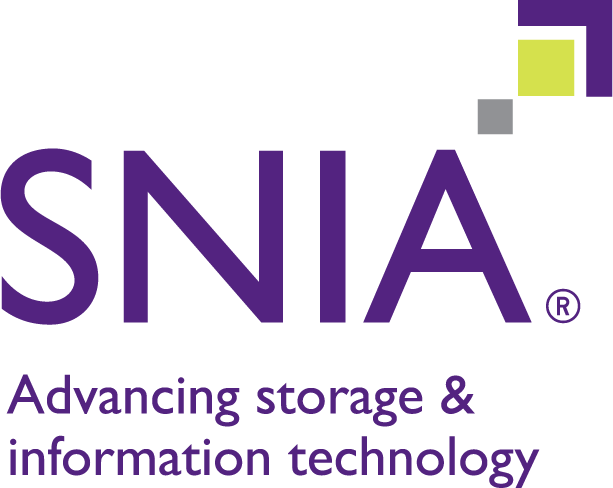
NVM Programming Model
The NVM Programming Model was developed to address the ongoing proliferation of new non-volatile memory (NVM) functionality and new NVM technologies.

NVM Programming TWG
The NVM Programming TWG was created for the purpose of accelerating availability of software enabling NVM (Non-Volatile Memory) hardware. T
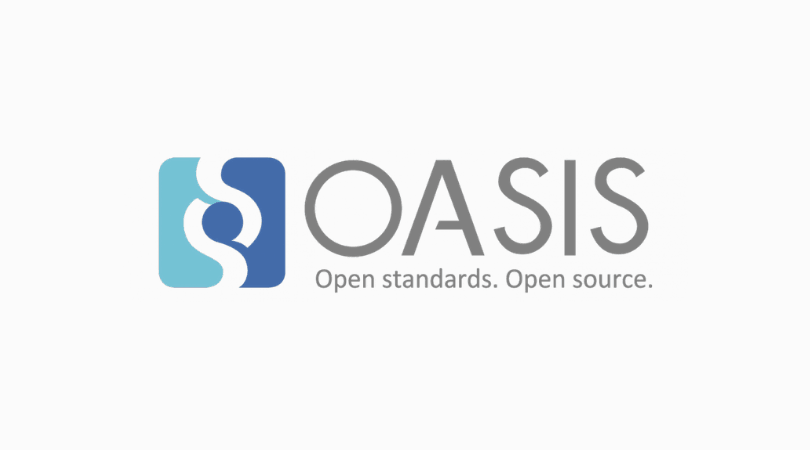
OASIS Advanced Message Queuing Protocol (AMQP) Bindings and Mappings (AMQP-BINDMAP) TC
The OASIS Advanced Message Queuing Protocol (AMQP) Bindings and Mappings (AMQP-BINDMAP) Technical Committee works closely with the AMQP TC to advance a wire-level messaging protocol that offers org

OASIS Advanced Message Queuing Protocol (AMQP) TC
The OASIS AMQP TC advances a vendor-neutral and platform-agnostic protocol that offers organizations an easier, more secure approach to passing real-time data streams and business transactions.

OASIS Advanced Message Queuing Protocol (AMQP) TC
The OASIS AMQP TC advances a vendor-neutral and platform-agnostic protocol that offers organizations an easier, more secure approach to passing real-time data streams and business transactions.

OASIS Business Document Exchange (BDXR) TC
The OASIS BDXR TC advances an open standards framework to support public e-procurement and e-invoicing.

OASIS Classification of Everyday Living (COEL) TC
The OASIS COEL specification provides a privacy-by-design framework for the collection and processing of behavioural data.

OASIS Cloud Application Management for Platforms (CAMP) TC
The OASIS CAMP TC advances an interoperable protocol that cloud implementers can use to package and deploy their applications.

OASIS Code List Representation TC
While code lists have been used for many years, and their representations for the purposes of being validated are features of a number of constraint languages, there does not exist any standardized

OASIS Collaborative Automated Course of Action Operations (CACAO) for Cyber Security TC
CACAO TC members are developing a standard to implement the course of action playbook model for cybersecurity operations.

OASIS Collaborative Automated Course of Action Operations (CACAO) for Cyber Security TC
CACAO TC members are developing a standard to implement the course of action playbook model for cybersecurity operations.

OASIS Context Server (CXS) TC
The OASIS Context Server (CXS) TC was chartered to create specifications for a Context Server (also known as Customer Data Platforms, CDP see below) as a core technology for enabling the delivery o

OASIS Cross-Enterprise Security and Privacy Authorization (XSPA) TC
The OASIS XSPA TC works to standardize the way healthcare providers, hospitals, pharmacies, and insurance companies exchange privacy policies, consent directives, and authorizations within and betw

OASIS Cyber Threat Intelligence (CTI) TC
The OASIS Cyber Threat Intelligence (CTI) TC was chartered to define a set of information representations and protocols to address the need to model, analyze, and share cyber threat intelligence.

OASIS Cyber Threat Intelligence (CTI) TC
The OASIS Cyber Threat Intelligence (CTI) TC was chartered to define a set of information representations and protocols to address the need to model, analyze, and share cyber threat intelligence.

OASIS Darwin Information Typing Architecture (DITA) TC
The purpose of the OASIS DITA Technical Committee (TC) is to define and maintain the Darwin Information Typing Architecture (DITA) and to promote the use of the architecture for creating standard i

OASIS Digital Signature Services eXtended (DSS-X) TC
The DSS-X TC is developing new profiles of the existing OASIS Digital Signature Services core protocol "Digital Signature Service Core Protoc

OASIS DocBook Technical Committee
The scope of DocBook is computer hardware and software documentation.

OASIS ebXML Core (ebCore) TC
The ebXML Core TC maintains ebXML specifications transitioned from other Technical Committees.

OASIS ebXML Messaging Services TC
The purpose of the OASIS ebXML Messaging Services TC is to develop and recommend technology for the transport, routing and packaging of business transactions using standard Internet technologies.

OASIS Electronic Identity Credential Trust Elevation Methods (Trust Elevation) TC
The OASIS Trust Elevation TC works to define a set of standardized protocols that service providers may use to elevate the trust in an electronic identity credential presented to them for authentic

OASIS Emergency Management TC
The EM-TC creates vendor-neutral and platform agnostic standards for organizations and agencies to more easily exchange emergency information.

OASIS Energy Interoperation TC
The Energy Interoperation TC works to define interaction between Smart Grids and their end nodes, including Smart Buildings, Enterprises, Industry, Homes, and Vehicles.

OASIS Energy Market Information Exchange (eMIX) TC
The OASIS eMIX TC works to define standards for exchanging energy characteristics, availability, and schedules to support the free and effective exchange of information.

OASIS eXtensible Access Control Markup Language (XACML) TC
The XACML Technical Committee defines a core XML schema for representing authorization and entitlement policies.

OASIS Key Management Interoperability Protocol (KMIP) TC
The OASIS KMIP TC works to define a single, comprehensive protocol for communication between encryption systems and a broad range of new and legacy enterprise applications, including email, databas

OASIS Legal Citation Markup (LegalCiteM) TC
The LegalCiteM TC develops an open standard for machine-readable tagging of legal citations based upon a formalized conceptual model, vocabulary, metadata definitions, and prescribed syntax.

OASIS LegalDocumentML (LegalDocML) TC
The OASIS LegalDocML TC works to advance worldwide best practices for the use of XML within a Parliaments', Assembly's or Congress' document management processes, within courts' and tribunals' judg

OASIS LegalRuleML TC
The OASIS LegalRuleML TC defines a rule interchange language for the legal domain.

OASIS LegalXML Electronic Court Filing TC
The OASIS Electronic Court Filing TC will develop specifications for the use of XML to create legal documents and to transmit legal documents from an attorney, party or self-represented litigant to

OASIS Litigant Portal (LP) TC
The OASIS Litigant Portal (LP) Technical Committee is chartered to produce specifications for data interoperation between Litigant Portal Modules.

OASIS Message Queuing Telemetry Transport (MQTT) TC
The OASIS MQTT TC is producing a standard for the Message Queuing Telemetry Transport Protocol compatible with MQTT V3.1, together with requirements for enhancements, documented usage examples, bes

OASIS Message Queuing Telemetry Transport (MQTT) TC
The OASIS MQTT TC is producing a standard for the Message Queuing Telemetry Transport Protocol compatible with MQTT V3.1, together with requirements for enhancements, documented usage examples, bes

OASIS Open Architecture for XML Authoring and Localization Reference Model (OAXAL) TC
OAXAL represents a method to exploit technical documentation assets by extending the usefulness of core XML-related standards in a comprehensive, open architecture.

OASIS Open Building Information Exchange (oBIX) TC
The purpose of oBIX (open Building Information Exchange) is to enable the mechanical and electrical control systems in buildings to communicate with enterprise applications, and to provide a platfo

OASIS Open Command and Control
The OpenC2 TC was chartered to draft documents, specifications, lexicons or other artifacts to fulfill the needs of cyber security command and control in a standardized manner.

OASIS Open Command and Control (OpenC2) TC
The OpenC2 TC was chartered to draft documents, specifications, lexicons or other artifacts to fulfill the needs of cyber security command and control in a standardized manner.

OASIS Open Data Protocol (OData) TC
The OASIS OData TC works to simplify the querying and sharing of data across disparate applications and multiple stakeholders for re-use in the enterprise, Cloud, and mobile devices.

OASIS Open Document Format for Office Applications (OpenDocument) TC
The OpenDocument Format (ODF) is an open XML-based document file format for office applications to be used for documents containing text, spreadsheets, charts, and graphical elements.

OASIS OSLC Lifecycle Integration for Project Management of Contracted Delivery (OSLC PROMCODE) TC
The OSLC PROMCODE TC defines technical elements and guidelines for project management of Software Supply Chains.

OASIS PKCS 11 TC
The OASIS PKCS 11 Technical Committee develops enhancements to improve the PKCS #11 standard for ease of use in code libraries, open sour

OASIS Privacy Management Reference Model (PMRM) TC
The OASIS PMRM TC works to provide a standards-based framework that will help business process engineers, IT analysts, architects, and developers implement privacy and security policies in their op

OASIS Production Planning and Scheduling (PPS) TC
The purpose of the OASIS Production Planning and Scheduling TC is to develop common object models and corresponding XML schemas for production planning and scheduling software, which can communicat

OASIS Security Services (SAML) TC
The Security Assertion Markup Language (SAML), developed by the Security Services Technical Committee of OASIS, is an XML-based framework for communicating user authentication, entitlement, and att

OASIS Service-Oriented Architecture End-to-End Resource Planning (SOA-EERP) TC
SOA End-to-End Resource Planning is a technology that optimizes deployment of services onto a SOA description of an application.

OASIS SOA Reference Model TC
The OASIS Service Oriented Architecture Reference Model TC develops a reference model to encourage the continued growth of different and specialized SOA implementations whilst preserving a common l

OASIS SOA Repository Artifact Model and Protocol (S-RAMP) TC
The SOA Repository Artifact Model and Protocol (S-RAMP) TC defines a common data model for SOA repositories as well as an interaction protocol to facilitate the use of common tooling and sharing of

OASIS Standard Incorporating Approved Errata 01
The OASIS MQTT TC is producing a standard for the Message Queuing Telemetry Transport Protocol compatible with MQTT V3.1, together with requirements for enhancements, documented usage examples, bes

OASIS Static Analysis Results Interchange Format (SARIF) TC
SARIF TC members are developing an interoperability standard for detecting software defects and vulnerabilities.

OASIS Static Analysis Results Interchange Format (SARIF) TC
SARIF TC members are developing an interoperability standard for detecting software defects and vulnerabilities.

OASIS Symptoms Automation Framework (SAF) TC
Human experts in specific IT infrastructure and business domains possess substantial knowledge about prevention, remediation, and optimization of systems.

OASIS Test Assertion Guidelines (TAG) Technical Committee
The design of Test Assertions (TAs) associated with a specification or standard - referred to in this charter as target specification - has the following recognized benefits: (i) it improves the qu

OASIS Universal Business Language TC
Defining a common XML library of business documents (purchase orders, invoices, etc.).
The aims of the UBL TC shall be as follows:

OASIS Variability Exchange Language (VEL) TC
VEL TC members are developing an interoperability standard that will enable the exchange of variability information among variant management tools and systems development tools.

OASIS Web Services Basic Reliable and Secure Profiles (WS-BRSP) TC
The OASIS WS-BRSP TC maintains WS-I (Web Services Interoperability) Basic Profiles (1.2 and 2.0), Basic Security Profile (1.0), Reliable Secure Profile (1.0), and ISO/IEC JTC 1 Profile Specificatio

Object Drive TWG
The Object Drive TWG was created for the purpose of establishing architectures and standards for disk, solid state and tape drive based functionalities that allow them to be higher level storage no

OCCI 1.2 - Open Cloud Computing Interface – Core
This document, part of a document series produced by the OCCI working group within the Open Grid Forum (OGF), provides a high-level definition of a Protocol and API.

OCCI 1.2 - Open Cloud Computing Interface – HTTP Protocol
This document, part of a document series produced by the OCCI working group within the Open Grid Forum (OGF), provides a high-level definition of a Protocol and API.

OCCI 1.2 - Open Cloud Computing Interface – Infrastructure
This document, part of a document series produced by the OCCI working group within the Open Grid Forum (OGF), provides a high-level definition of a Protocol and API.

OCCI 1.2 - Open Cloud Computing Interface – Templates Profile
This document, part of a document series produced by the OCCI working group within the Open Grid Forum (OGF), provides a high-level definition of a Protocol and API.

OCCI 1.2 Open Cloud Computing Interface – JSON Rendering
This document, part of a document series produced by the OCCI working group within the Open Grid Forum (OGF), provides a high-level definition of a Protocol and API.

OCCI 1.2 Open Cloud Computing Interface – Platform
This document, part of a document series produced by the OCCI working group within the Open Grid Forum (OGF), provides a high-level definition of a Protocol and API.

OCCI 1.2 Open Cloud Computing Interface – Service Level Agreements
This document, part of a document series produced by the OCCI working group within the Open Grid Forum (OGF), provides a high-level definition of a Protocol and API.

OCCI 1.2 Open Cloud Computing Interface – Text Rendering
This document, part of a document series produced by the OCCI working group within the Open Grid Forum (OGF), provides a high-level definition of a Protocol and API.

ODRL Information Model 2.2
A rights language model to express access rights to e.g. product information, organisational credentials or services

ODRL Vocabulary & Expression 2.2
A rights language vocabulary to express access rights to e.g. product information, organisational credentials or services

Office equipment
Standardization of basic characteristics, test methods and other related items of products such as 2D and 3D Printers/Scanners, Copiers, Projectors, Fax and Systems composed of their combinations,
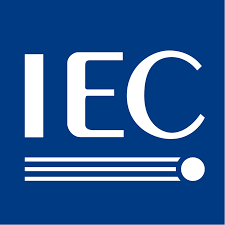
Office equipment
Standardization of basic characteristics, test methods and other related items of products such as 2D and 3D Printers/Scanners, Copiers, Projectors, Fax and Systems composed of their combinations,

OIC Interworking - (oneM2M TS-0024 version 2.0.0 Release 2)
The present document specifies the interworking technologies for oneM2M and OIC interworking using the architecture identified in annex F of ETSI TS 118 101 [2] for the following scenario:
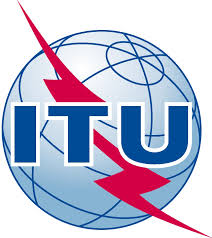
OID-based resolution framework for transactions of a distributed ledger assigned to IoT resources
An object identifier (OID) is an identifier to name an object in a hierarchically assigned namespace.

OMA-AD-GwMO-V1_1-20170725-AGateway Management Object Architecture
The scope of the Gateway Management Object architecture document is to define the architecture for the DM Gateway Management Object v1.1 enabler.

OMA-ERELD-GwMO-V1_1-20170725-AEnabler Release Definition for Gateway Management Object (GwMO)
The scope of this document is limited to the Enabler Release Definition of Gateway Management Object (GwMO v1.1) according to OMA Release process and the Enabler Release specification baseline list

OMA-RD-GwMO-V1_1-20170725-AGwMO Requirements
This document lists the complete set of requirements for the OMA DM Gateway Management Object Enabler v1.1. It includes all the requirement of the OMA DM GatewayMO v1.0.

OMA-TS-DM-GwMO_ZigBeeMO-V1_0-20170725-AManagement Objects for ZigBee Devices
This document defines an OMA DM management object (data model) to represent ZigBee devices.

OMA-TS-GwMO-V1_1-20170725-AGateway Management Object Technical Specification
This technical specification describes Management Objects and Generic Alerts that are needed to provide the DM Gateway functionality, as defined in [DMDICT].

ONAP Mappings to the ETSI GANA Model; Using ONAP Components to Implement GANA Knowledge Planes and Advancing ONAP for Implementing ETSI GANA Standard’s Requirements; and C-SON – ONAP Architecture
This Technical White Paper No.2 is about Demo-2 (of a series of Demos planned for 2018/2019 and bey

oneM2M - Use Case collection
The present document includes a collection of use cases from a variety of M2M industry segments.

oneM2M and AllJoyn® Interworking (oneM2M TS-0021 version 2.0.0 Release 2)
The present document specifies the oneM2M and AllJoyn® interworking technologies that enable AllJoyn® Applications and oneM2M entities produce/consume services.

oneM2M Field Device Configuration (oneM2M TS-0022 version 2.0.0 Release 2)
The present document specifies the architectural options, resources and procedures needed to pre-provision and maintain devices in the Field Domain (e.g.

Ontological Standard for Ethically Driven Robotics and Automation Systems
A set of ontologies with different abstraction levels that contain concepts, definitions, axioms, and use cases that assist in the development of ethically driven methodologies for the design of robot
Ontology of Identity Credentials
An ontology of identity credentials is an explicit specification of a conceptualization of identity credentials, including the actors, actions, and objects that establish the relationships of

Open Assembly Model
The objective of the paper is to show how the OAM can be used to realize seamless integration of product information, with an emphasis on assembly, throughout all phases of a product design
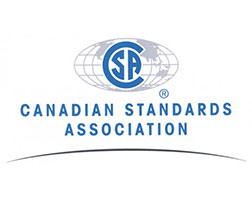
Open Certification Framework
The CSA Open Certification WG is an industry initiative to allow global, accredited, trusted certification of cloud providers.

Open Certification Framework Working Group
The CSA Open Certification WG is an industry initiative to allow global, accredited, trusted certification of cloud providers.

Open Cloud Computing Interface Working Group (OCCI-WG)
The purpose of this group is the creation of a practical solution to interface with Cloud infrastructures exposed as a service (IaaS).

Open data application programming interfaces (APIs) for IoT data in smart cities and communities
A growing number of smart cities and administrations are inclined to collaborate and mutualize their efforts and resources for IoT deployments and open data sharing.

Open Smart Grid Protocol (OSGP); Smart Metering/Smart Grid Communication Protocol
The objective of this scope of work is to provide an update of an existing section of ETSI GS OSG 001 (section 7) on security. This GS was originally created under the ISG OSG.

Open Smart Grid Protocol (OSGP); Smart Metering/Smart Grid Communication Protocol
The TS needs some minor updates to the normative references and abbreviations sections.
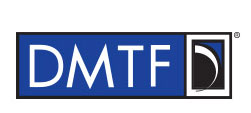
Open Virtualisation Format Working Group (OVFWG)
The rapid adoption of virtual infrastructure has highlighted the need for a standard, portable metadata format for the distribution of virtual systems onto and between virtualization platforms.

Open Virtualization Format Specification 2.1.1
The Open Virtualization Format (OVF) Specification describes an open, secure, efficient and extensible format for the packaging and distribution of software to be run in virtual systems.

OpenApi Naming and design rules technical specification
The OpenAPI Naming and Design Rules technical specification defines an architecture and a set of rules necessary to specify, describe and implement APIs based on an OpenAPI specification to consist
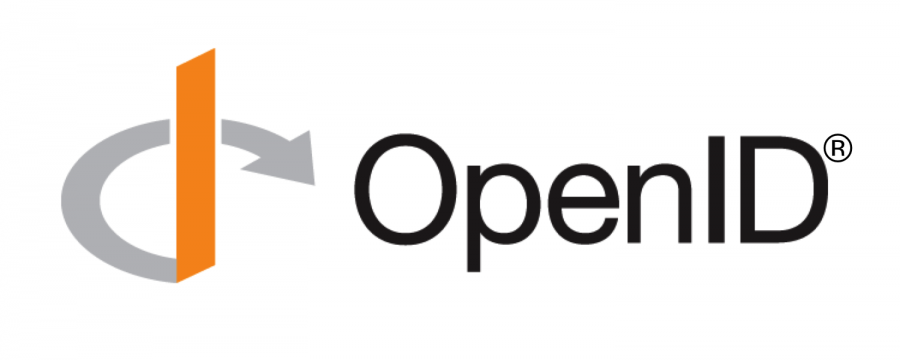
OpenID Connect
Alternative protocol to exchange verifiable credentials between supply chain actors.

OpenID Connect for Verifiable Presentations
A technical specification that defines an extension of OpenID Connect to allow presentation of claims in the form of W3C Verifiable Credentials as part of the protocol flow

OpenID for Verifiable Credential Issuance
A technical specification that defines an API and corresponding OAuth 2.0-based authorization mechanisms for the issuance of W3C Verifiable Credentials.
